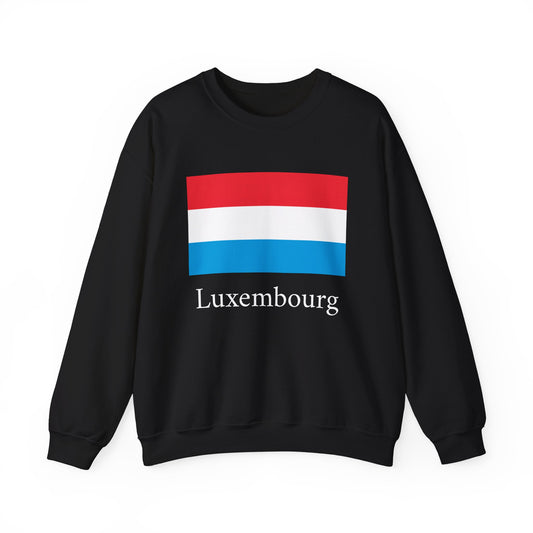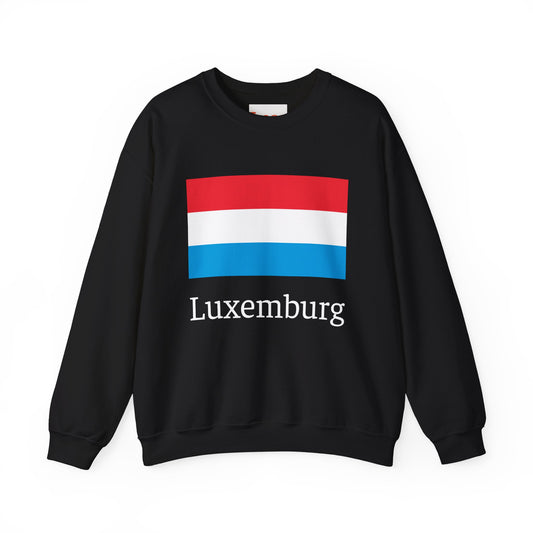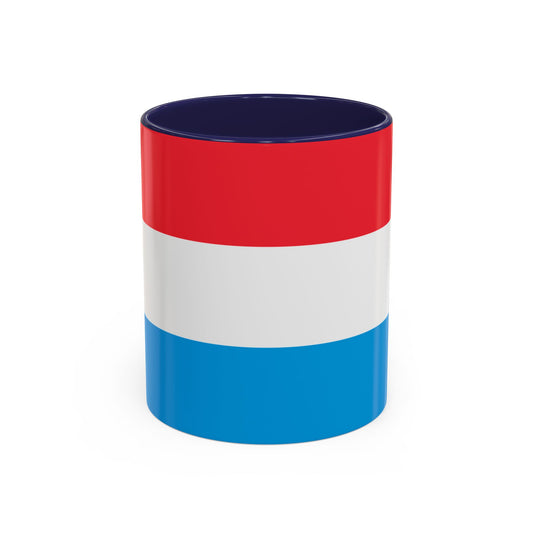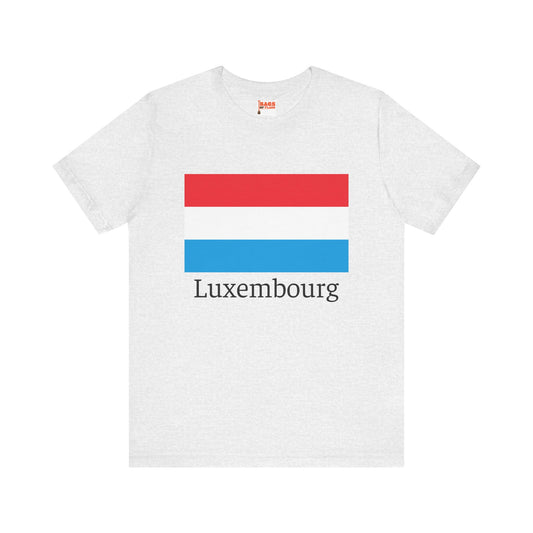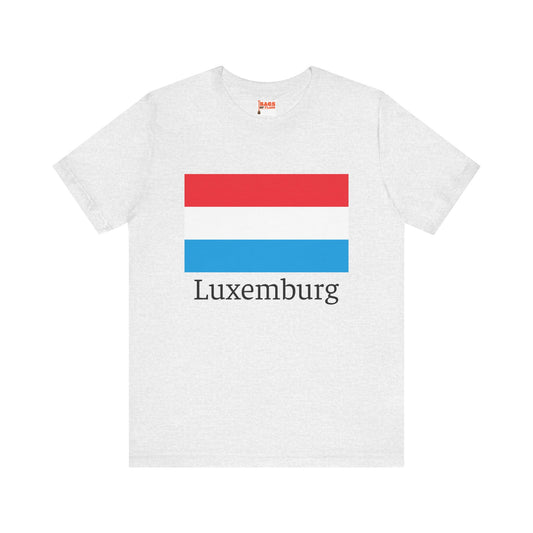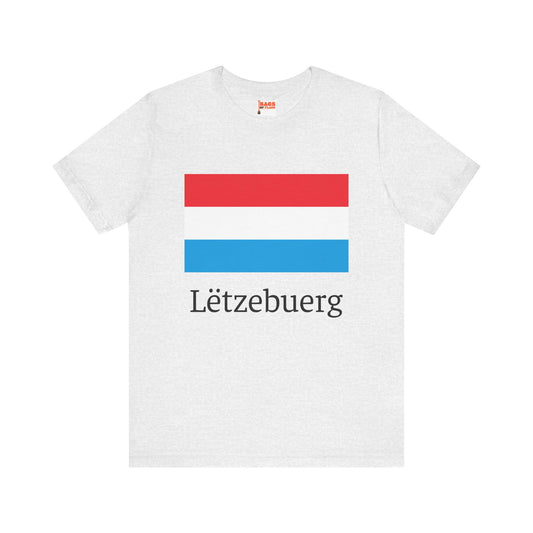-
Luxembourg Sweatshirt
Regular price $34.15 USDRegular priceUnit price / per -
Lëtzebuerg Sweatshirt
Regular price $34.15 USDRegular priceUnit price / per -
Luxemburg Sweatshirt
Regular price $34.15 USDRegular priceUnit price / per -
Luxembourg Flag Sweatshirt
Regular price $34.15 USDRegular priceUnit price / per -
Luxembourg Pillow
Regular price $22.65 USDRegular priceUnit price / per -
Luxembourg Backpack
Regular price $59.79 USDRegular priceUnit price / per -
Luxembourg Leather Patch Hat
Regular price $18.85 USDRegular priceUnit price / per -
Luxembourg Mug
Regular price $11.65 USDRegular priceUnit price / per -
Luxembourg Trucker Cap
Regular price $14.90 USDRegular priceUnit price / per -
Luxembourg Hoodies
Regular price $34.40 USDRegular priceUnit price / per -
Luxembourg T-shirts
Regular price $22.79 USDRegular priceUnit price / per -
Luxembourg Flag Hoodies
Regular price $34.40 USDRegular priceUnit price / per -
Luxembourg Flag on T-shirt
Regular price $22.79 USDRegular priceUnit price / per -
Luxemburg Hoodies
Regular price $34.40 USDRegular priceUnit price / per -
Luxemburg T-shirts
Regular price $22.79 USDRegular priceUnit price / per -
Lëtzebuerg Hoodies
Regular price $34.40 USDRegular priceUnit price / per -
Lëtzebuerg T-shirts
Regular price $22.79 USDRegular priceUnit price / per
Collection: Luxembourg
The Luxembourg flag symbolizes national pride and identity for the people of Luxembourg. Its design and colors hold significant meaning, reflecting the country's history and values. We will explore the controversies, protocols, and symbolism surrounding the Luxembourg flag.
Overview of the Luxembourg Flag's Design and Colors

At its core, the Luxembourg flag comprises three equal horizontal bands – a vibrant red on top, a crisp white in the middle, and a serene light blue at the bottom. Each color on the flag is not just a choice of aesthetics but carries deep-rooted significance that resonates with Luxembourg's values and historical narrative. The red stripe symbolizes bravery and courage, embodying the nation's people's spirit and readiness to protect their country. The white band encapsulates the ideals of peace and honesty, reflecting Luxembourg's longstanding commitment to these virtues domestically and internationally. The light blue stripe, perhaps the most distinctive aspect of the flag, represents perseverance and justice, signaling the nation's dedication to fairness and the relentless pursuit of progress. Inspired by the Grand Ducal coat of arms, the color scheme visually represents Luxembourg's royal lineage and its enduring legacy. The flag's design is a concise portrayal of the country's identity, eloquently conveying the principles Luxembourg stands by.
Historical Context of the Luxembourg Flag

The journey to the Luxembourg flag's current iteration has been long, marked by various historical milestones reflecting the nation's evolving identity. Initially, the flag bore a striking resemblance to the flag of the Netherlands due to shared historical and royal connections, which occasionally led to confusion. This similarity, especially in the colors used, was an aspect that distinguished early versions of the Luxembourg flag. Throughout its history, the flag has undergone subtle yet significant transformations, culminating in the 1972 official adoption that solidified its unique identity as separate from the Netherlands.
This change was not just a shift in design but a deliberate move to carve out a distinct national symbol that reflected Luxembourg's sovereignty and individuality on the world stage. The adoption of the flag in 1972 came at a time when Luxembourg was seeking to affirm its presence and voice internationally following the tumultuous events of the 20th century, including both World Wars, which deeply affected Luxembourg and its people. The establishment of the current flag design thus marked a new chapter in Luxembourg's national narrative, symbolizing a rebirth and a step forward into a future built on the lessons of the past.
Symbolism Behind the Luxembourg Flag
The Luxembourg flag is steeped in symbolism that reflects the core values and history of the nation. The three horizontal stripes of red, white, and light blue are more than just aesthetic choices; they are imbued with deep meaning. The red stripe symbolizes the courage and strength of the Luxembourgish people, a tribute to their resilience and bravery throughout history. White stands for peace and purity, signifying Luxembourg's commitment to these principles in its domestic and foreign policies. The light blue stripe brings a unique element to the flag, representing hope and the steadfast spirit of the nation in its pursuit of justice and liberty. Unlike some national flags that incorporate specific symbols like stars or crosses, the simplicity of the Luxembourg flag's design focuses on these core themes of bravery, peace, and hope, making it a powerful emblem of the country's identity and aspirations. This symbolism serves to unite Luxembourg's citizens under a standard banner, embodying the shared values and heritage that define their country.
Current Relevance of the Luxembourg Flag
Today, the Luxembourg flag continues to be a vibrant symbol of national identity and pride, flown proudly at various occasions, from state events to local celebrations. On National Day, which takes place on June 23rd each year, the flag is obvious, adorning streets and homes across the country in a vivid display of patriotism. In addition to its ceremonial use, the flag plays an integral role in military traditions, signaling respect and honor during official ceremonies and commemorations.
Despite its substantial presence in national life, the Luxembourg flag has encountered its share of contemporary debate. Discussions have surfaced around the flag's ability to represent the diverse facets of modern Luxembourg society, with some voices calling for a redesign that more accurately reflects the country's current ethos and values. This discourse underlines the dynamic nature of national symbols; they are not static but evolve alongside the nations they represent.
The conversation surrounding the Luxembourg flag underscores its ongoing relevance in the nation's collective consciousness. Far from being a mere relic of the past, the flag remains at the heart of national dialogue, serving as a point of unity and lively discussion. As Luxembourg continues to navigate the complexities of the 21st century, the flag stands as a testament to its enduring spirit and the shared history that continues to shape its future.
Additional Facts About the Luxembourg Flag
The Luxembourg flag is subject to several protocols that govern its display and usage, ensuring it is treated with the respect it deserves. One notable guideline is that the flag should be raised at the break of dawn and taken down at dusk, reflecting the nation's respect for its emblem. Additionally, care must be taken to prevent the flag from ever contacting the ground, a rule common to many national flags aimed at preserving their sanctity. Using the Luxembourg flag for commercial purposes is strictly prohibited, safeguarding its image from being exploited or demeaned.
A captivating piece of history related to the Luxembourg flag involves its prohibition during the German occupation in World War II. The ban made the flag a potent symbol of resistance among Luxembourg's citizens and demonstrated the flag's influential role in embodying national defiance. This period highlighted the flag's significance far beyond its physical representation, becoming a beacon of hope and an enduring emblem of the country's resilience and fight for freedom.


